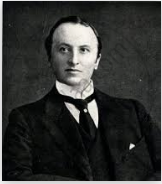Advertisements
Advertisements
प्रश्न
Answer the following question:
Discuss the main aspects of the Non-Cooperation Movement.
उत्तर
The growing antagonism of the Indians towards the British led to Khilafat and Non-Cooperation Movement. Gandhiji looked upon the Khilafat agitation as an opportunity of uniting Hindus and Muslims as would not arise in a hundred years. The Noncooperation Movement was named so because it decided not to cooperate with the Government by renunication of titles, boycott of legislature, resigning from government jobs, lawyers leaving courts, students leaving British schools and colleges, boycott of British Goods and other activities. People refused to pay taxes, no longer recognising government as legitimate.
APPEARS IN
संबंधित प्रश्न
Choose the correct answer:
Vande Mataram’ was written by ___________.
Fill in the blanks:
The assertive nationalists believed that British rule in India was not a _________ but a ______.
Answer the following question briefly:
With reference to the Indian national movement, answer the following: Examine the role of Subhash Chandra Bose in the Indian freedom struggle.
Answer the following question briefly:
With reference to Indian independence, answer the following question: What is the significance of 26 January 1950?
Fill in the blanks:
The Swaraj Party was led by ____ and ____.
Fill in the blank:
The Quit India Movement took place in the year ____.
Match the contents of Column A with those of Column B:
| Column A | Column B |
| 1. Annie Besant | (a) Khilafat Movement |
| 2. Morley-Minto Reforms | (b) Home Rule League |
| 3. Muslim League | (c) 1909 |
| 4. Surat Split | (d) Nawab Salimullah Khan |
| 5. Ali brothers | (e) 1907 |
State whether the following statement is true or false:
The religious and social reform ^movement divided the Indians.
Look at the given picture.

When did the partition of Bengal take place?
Look at the given picture.

What excuse did the British give?
